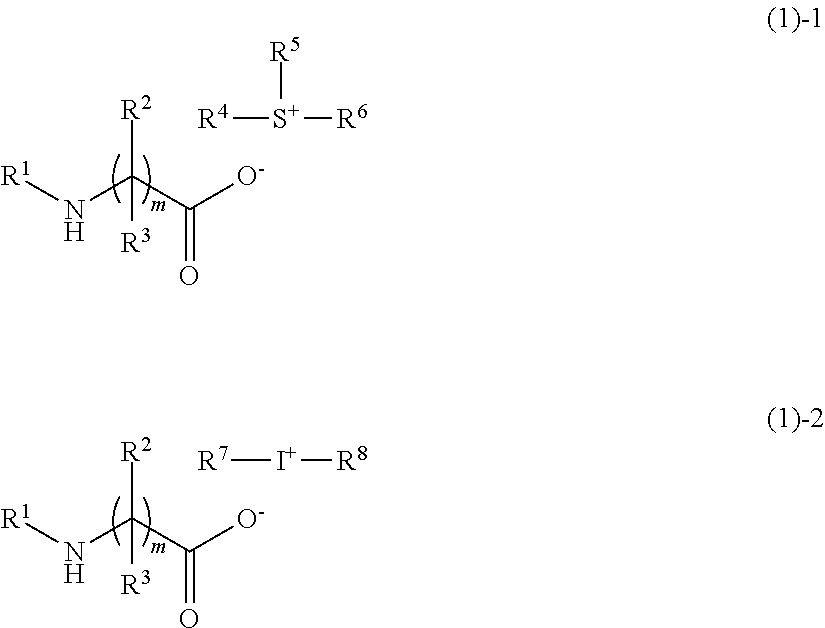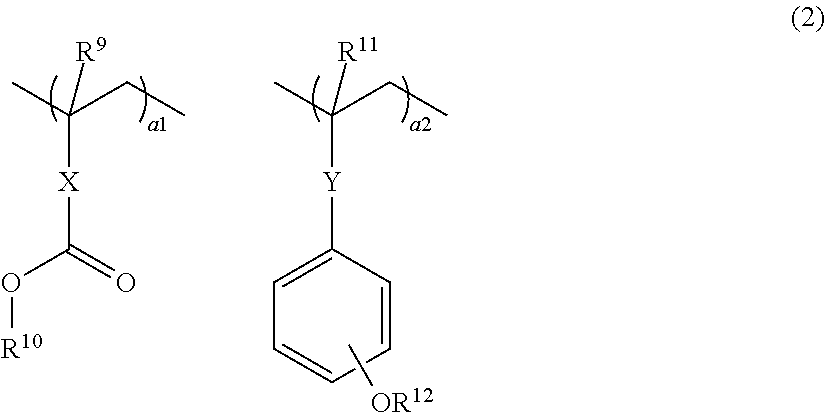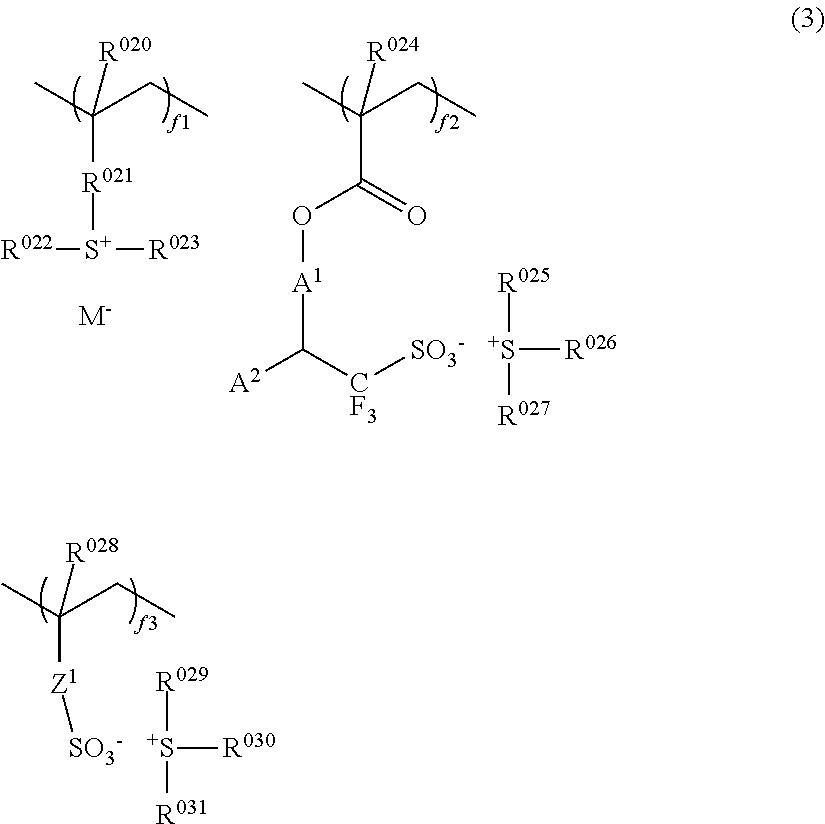Resist composition and patterning process
a composition and patterning technology, applied in the field of resist composition, can solve the problems of less effective reduction of lwr and low dissolution contrast, and achieve the effects of wide focus margin, high dissolution contrast, and improved resolution
- Summary
- Abstract
- Description
- Claims
- Application Information
AI Technical Summary
Benefits of technology
Problems solved by technology
Method used
Image
Examples
example
[0108]Examples of the invention are given below by way of illustration and not by way of limitation. The abbreviation “pbw” is parts by weight. For all polymers, Mw and Mn are determined by GPC versus polystyrene standards using tetrahydrofuran solvent, and Mw / Mn designates molecular weight distribution or dispersity. For measurement of the hole size of a pattern, a scanning electron microscope (SEM) CG-4000 (Hitachi High-Technologies Corp.) was used.
[0109]Quenchers 1 to 50 in the form of carboxylic acid-generating acid generators used herein have the following structure.
synthesis example
Synthesis of Polymers 1 to 13
[0110]Polymers to be added to resist compositions were prepared by combining suitable monomers, effecting copolymerization reaction thereof in tetrahydrofuran solvent, pouring the reaction solution into methanol for crystallization, repeatedly washing with hexane, isolation, and drying. The resulting polymers, designated Polymers 1 to 13, were analyzed for composition by 1H-NMR, and for Mw and Mw / Mn by GPC.
PUM
 Login to View More
Login to View More Abstract
Description
Claims
Application Information
 Login to View More
Login to View More - R&D
- Intellectual Property
- Life Sciences
- Materials
- Tech Scout
- Unparalleled Data Quality
- Higher Quality Content
- 60% Fewer Hallucinations
Browse by: Latest US Patents, China's latest patents, Technical Efficacy Thesaurus, Application Domain, Technology Topic, Popular Technical Reports.
© 2025 PatSnap. All rights reserved.Legal|Privacy policy|Modern Slavery Act Transparency Statement|Sitemap|About US| Contact US: help@patsnap.com



